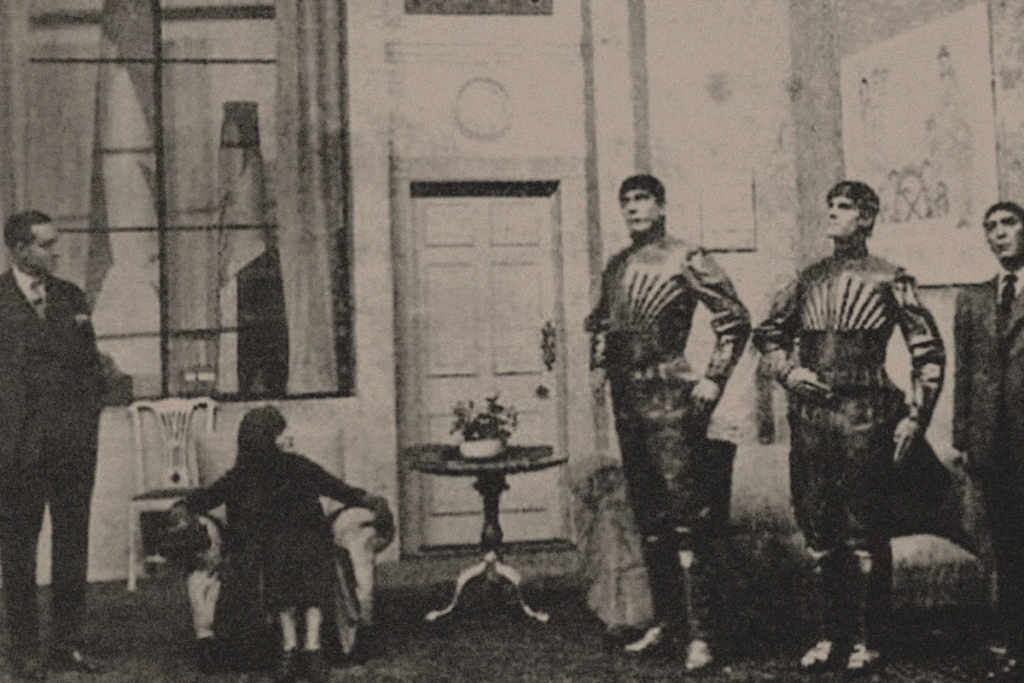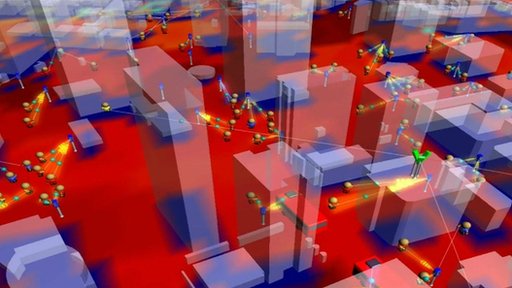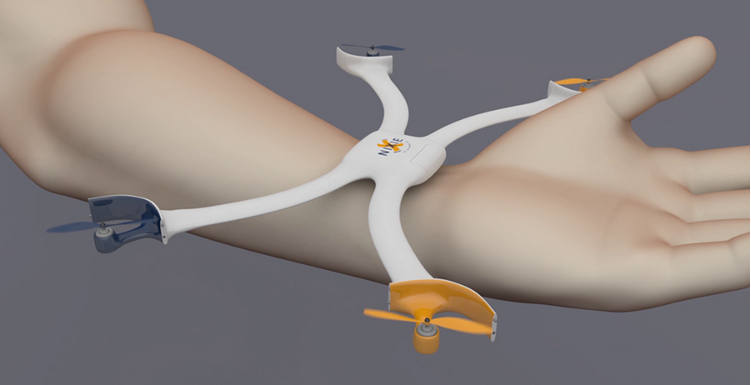Exactly one hundred years ago, a play premiered that introduced a significant new word to the world – robot. When the first production of Karel Čapek’s R.U.R. opened on January 25, 1921, at the National Theater in what is now the Czech Republic, it not only gave a name to the cybernetic machines that were just beginning to emerge, it also shaped people’s perceptions of what a robot is and the potential dangers they pose.
R.U.R., which stands for Rossum’s Universal Robots, came along at the perfect moment. The period between 1880 and 1930 saw the fastest rate of change in human history, with more fundamental advances in half a century than in the previous 2,000 years.
It was the age of the machine, which had intruded so thoroughly into modern society that artists had to come up with whole new forms of expression to include it and portray it. It was also the age of Henry Ford, with his assembly line churning out thousands of uniform black motor cars by the thousands at a price that the average worker could afford. The telephone, wireless telegraphy, radio, the first televisions, radium, airplanes, plastic … the world was awash with new technology.
1920 was also just after the First World War, which killed off a large part of a generation with mechanical efficiency, destroyed whole empires, sparked social changes that we are still learning to deal with, and turned the United States from a sleeping giant into a nascent superpower. The world of science was only marginally less tumultuous, as Albert Einstein’s special theory of relativity turned out to be the most radical reassessment of our understanding of the physical world since Sir Isaac Newton was conked by an apple.
Penned by Karel Čapek, a Czech author and critic who would receive no less than seven Nobel Prize nominations for literature before his untimely death in 1938, R.U.R. may have been subtitled as a “fantastic melodrama” (and it reads like one), but it is actually a very complex satire on a whole raft of topics, including mechanization, the factory system, consumerism, the Americanization of the world, capitalism, labor relations, nationalism, militarism, the meaning of being human, and the importance of having a purpose in life.
The play opens in the then-distant future of 1950 on a remote island somewhere in tropical seas. This is the headquarters of Rossum’s Universal Robots, the company that manufactures all the robots in the world.
Forced labor
The word “robot” comes from the Czech “robota,” which roughly translates as “forced labor.” This is an apt name for R.U.R.’s product because it is designed solely for work. However, these robots are not machines made out of stamped metal and plastic running on batteries and having computers for brains. They are humanoid biological machines, more like the Replicants from Blade Runner or the Cylons from the rebooted Battlestar Galactica.
Though they come in male and female models and seem almost identical on the outside, the robots are made of an artificial protoplasm that can be worked like plastic or other industrial materials to form artificial nerves, tendons, bones, muscles, hearts, lungs, brains, and other organs that can be stored in vats until the robots are assembled like motor cars in the form of full-grown adults, though without the ability to reproduce.
They have been designed along strict engineering lines for maximum efficiency at the lowest cost, with each one costing £15 (US$75), or roughly US$1,020 in today’s money – clothes included. Though they have brains that can think as fast as a computer and can store vast amounts of information, they are utterly devoid of feelings and are completely indifferent to their fate, even as they are disassembled.
The robots are coming
The story begins with the arrival of a young woman called Helena Glory, who is president of the pro-robot Humanity League. She is surprised to learn that, though the island has a population running into the thousands, only the General Manager Harry Domain and four eccentric men who make up the staff are humans, and live like hermits.
She’s even more surprised when she reveals that her mission is to free the robots from the servitude, only to be told quite happily by Domain that she can say anything she likes to the robots or hand them any literature she likes, but it won’t do any good. Essentially, he says that she’d have better luck trying to unionize a row of sewing machines. When she suggests paying the robots, so they can buy what they like, she’s told that they don’t “like” anything.
This is quickly followed by Helena and Domain agreeing to marry after an onstage courtship that lasts all of five minutes.
The plot then jumps forward a decade. The robots have now completely replaced the world’s workforce and prices have dropped so low that goods may soon be given away for free. Even the armies of the world have been replaced by robots. This, as it turns out, is a bad idea. The latest generation of advanced robots have developed emotions and have organized the other robots to revolt and begin a worldwide campaign to exterminate the human race.
The revolt comes to the island and when the robots turn against them, the handful of humans are besieged inside the living quarters behind an electric barrier. However, the survivors are unafraid because they have the only copy of the complex instructions for creating new robots, and they plan to tell the rebels, led by a super-advanced experimental robot called Radius, to call off the revolt or become extinct in 20 years time.
We find out that it was Helena who accidentally sparked the revolt by secretly persuading the company’s chief physiologist to give the robots emotions, so robots and humans can better understand one another. This backfires when the only emotions the robots manifest are anger, envy, hatred, and a lust for power and revenge. She then secretly tries to halt the menace by burning the only copy of how to create robots, so no more can be made, but not realizing how bad the outside situation has become. With nothing to bargain with, the humans are overrun and are all killed with the exception of the factory clerk, Alquist, because he works with his hands.
The play ends with the robots facing their own doom, but there is a hopeful note as a male and female robot start to show tender feelings for one another and it’s implied that they might be able to reproduce naturally.
A lasting legacy
R.U.R. went on to become a very successful play. It was produced within two years at the St Martin’s Theatre in London and the Garrick Theater in New York, often with striking expressionist costumes and set designs, and featuring actors like Basil Rathbone, Spencer Tracy, and Pat O’Brien. In 1938, it became history’s first science fiction television program when the BBC broadcast an abridged version. In 1948, the corporation aired a full version, featuring Patrick Troughton, who would later go on to battle a rogue’s gallery of robotic enemies on the small screen as Doctor Who.
The impact of the play on popular culture would be hard to overestimate. Its theme of robot revolt and humanity being dominated by its own technology inspired scripts for The Twilight Zone, Star Trek, The Night Gallery, Battlestar Galactica, Blade Runner, Westworld, The Terminator franchise, Doctor Who, and 2001: A Space Odyssey. It also heavily impacted science fiction novels, inspiring Isaac Asimov’s Three Laws of Robots, Frank Herbert’s Dune, and Harlan Ellison’s harrowing short story I Have No Mouth and I Must Scream, among many others.
The idea had been introduced that a robot wasn’t a machine that could, on some level, be related to as another conscious entity
But perhaps R.U.R.’s greatest impact was on our very conception of the robot and our relationship to it. Machines that look like people aren’t new. They date back to the ancient Greeks with the legend of the god Hephestus, who built a pair of gold handmaidens to help him get about his workshop on his twisted leg. In the 18th and 19th century, there were all manner of clever humanoid contraptions that could write, paint, play the organ, supposedly play chess, and perform other diverting tricks.
These were generally referred to as automata, but they are very different from a robot in conception. Automata are toys, curiosities, sideshows. After Čapek, a robot was a worker. It was a practical machine that was made to carry out practical tasks. They are the assembly line worker merged with the Model T.
Another thing that Čapek introduced was the idea that robots were relatable. They didn’t even need to look human. A robot could look like Roy Beatty, C3PO, or R2D2, but it didn’t matter. The idea had been introduced that a robot wasn’t a machine that could, on some level, be related to as another conscious entity. A Roomba with a soul.
In the 21st century, with our concerns about Big Tech companies having so much of our personal information, the potential dangers of some future artificial intelligence, and the impact of digital technology on our lives in ways we can’t control, R.U.R. is particularly relevant.
Real life robots and intelligent systems also bring the threat and promise of human obsolescence. Robots certainly can liberate people from dangerous, monotonous, and degrading jobs. They can also enhance human abilities by acting as helpers and force multipliers. On the other hand they can remove people from gainful employment that provides more than a pay packet. We’re used to the idea of low-skilled jobs giving way to robots or digital systems, but as technology advances, the machines keep edging up to the skill ladder until the obsolete one day will include airplane pilots and surgeons. This doesn’t just affect income, it also attacks a person’s sense of purpose or even their fundamental identity.

R.U.R. also foreshadowed our age of the emerging robotic soldier. Currently robots are a way to protect soldiers from harm while providing much greater battlefield capabilities. Čapek gave a warning that literal war machines are something that must be kept on a short lead and under a very watchful eye to make sure that one day they don’t go full Skynet on us.
Čapek also makes us question what it is we mean by progress. There are no villains in the play, except for the robot Radius, and even he reforms in the end. Though they are there to make money, the staff at R.U.R. are not stereotypical greedy, cold-hearted capitalists. They are altruists who, each in their one way, are trying to better the human condition. Their overarching belief is that the robots are freeing humanity from toil and giving us the leisure to “perfect” ourselves.
The fact that these good intentions keep leading to nightmarish ends is the real cautionary tale Čapek is spinning. Someone who knows that they are doing wrong will at least have their conscience to act as a brake on their actions and a warning of the consequences. If someone is certain of the rightness and goodness of what they are doing, then they are in danger of rushing ahead into disaster without hesitation.
Finally, what R.U.R. also shows us is that nothing dates faster than dreams of the future. Even when it premiered, technological and scientific advances were already leaving the play behind.
For example, having the robots made out protoplasm is something that has to be explained to people in the 21st century. Protoplasm is an outdated term for the substance that fills organic cells. This is based on an old idea that cells were very simple things, little more than bags filled with living jelly, instead of the highly complex microscopic biochemical factories we know them as today.
And then there are communications. Much of the tension in the second act comes as the staff of R.U.R. await a mail ship with news of the rebellion. This was plausible in 1920, but inside of five years, long-range shortwave radio would go into regular service and such suspenseful isolation would be as difficult to imagine as someone not having a phone in their pocket today, or living in a world without Zoom meetings.
That being said, one thing that seemed to date the play for decades now seems remarkably prophetic. The robots can be seen as either the result of bioengineering or as a highly sophisticated imitation of organic life. Both of these are now very much at the forefront of technology as we learn more about both genetic manipulation and how to recreate mechanical versions of living things.
Maybe Čapek’s robots get the last laugh after all.
via newatlas.com



